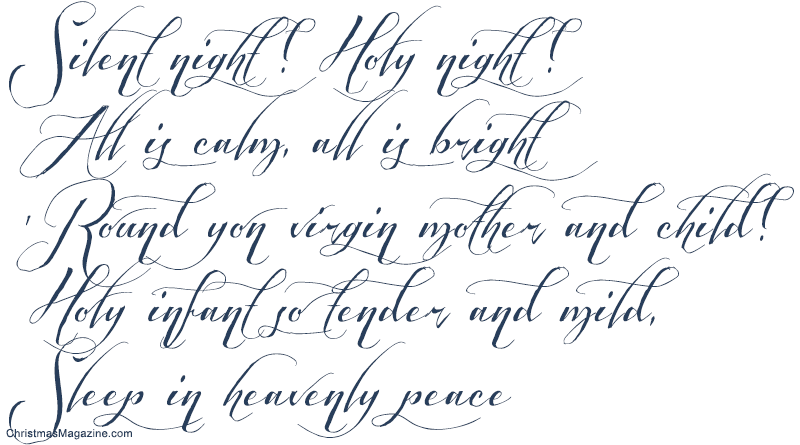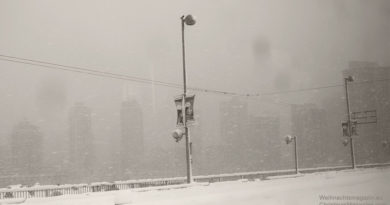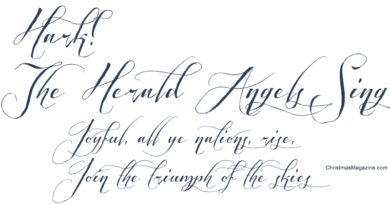Silent Night
Franz X. Gruber and Joseph Mohr
Source: The Christmas Caroler’s Book, 1935
On Christmas Eve, 1818, the organ of St. Nicholas Church in Oberndorf, near Salzburg, was in need for repair. Oberndorf was snowbound, and there was no repairman for miles around. Yet there must be some form of special music for the Christmas service. Franz Gruber, church organist, lay the matter before his friend Joseph Mohr, vicar of the church, suggesting that a new song might be helpful in the emergency. At this suggestion Mohr wrote the lovely verses of Stille Nacht (Silent Night). Gruber immediately composed the music for it and presented the new song at the Christmas midnight Mass. It was sung in a three-part arrangement to the accompaniment of a guitar.
When the organ repairman arrived from Tyrol, a few days later, Gruber showed him the new song. He was pleased with it and took it to a family in the Austrian Tyrol, who made extended concert tours and were famous for their singing in folk-songs. Through this family the song became known in Germany even before it was published.
In 1840, at Leipzig, it was printed as a “Tyrolean” Christmas song. In its travels about Germany the song had lost the names of its composers. It was thought to be a folk-song, and as such, no one suspected that the authorship could be determined. At one time the name of Michael Haydn (brother of famous Franz Joseph) was associated with the song as the composer. It has since been learned that he made a four-part arrangement of it.
It is only recently that the true story of Silent Night has become generally known. The first inquiry into the origin of the song was made in 1854 by musicians of the royal court in Berlin. Later investigations by Ludwig Erk and H.E. Zimmermann have thrown much light on the subject. Zimmermann tells us that “the same inspiration which moved the priest moved the organist”. One might think that some divine inspiration alone could make it possible to compose the words and music of such an immortal song in but a few hours. From the little hamlet of Oberndorf in Germany the song has found its way into every hamlet of the Christian world. Zimmermann says that it found its way across the ocean to America through a group of Tyrolean singers.
Wherever this exquisite song is sung, it awakens precious memories of childhood, of lighted Christmas trees in darkened churches and homes. The very simplicity of the song and the tranquil beauty of its music seem to breathe the atmosphere of the humble manger-birth. It has sung its way into the hearts of mankind, being now one of the universal favorites, and has been translated into no less than ninety different languages and dialects.
Silent Night
Silent night! Holy night!
All is calm, all is bright
‘Round yon virgin mother and child!
Holy infant so tender and mild,
Sleep in heavenly peace,
Sleep in heavenly peace.
Silent night! Holy night!
Shepherds quake at the sight!
Glories stream from heaven afar,
Heav’nly hosts sing “Alleluia!”
Christ, the Saviour, is born!
Christ, the Saviour, is born!
Silent night! Holy night!
Son of God, love’s pure light
Radiant beams from Thy holy face,
With the dawn of redeeming grace,
Jesus, Lord, at Thy birth,
Jesus, Lord, at Thy birth.




